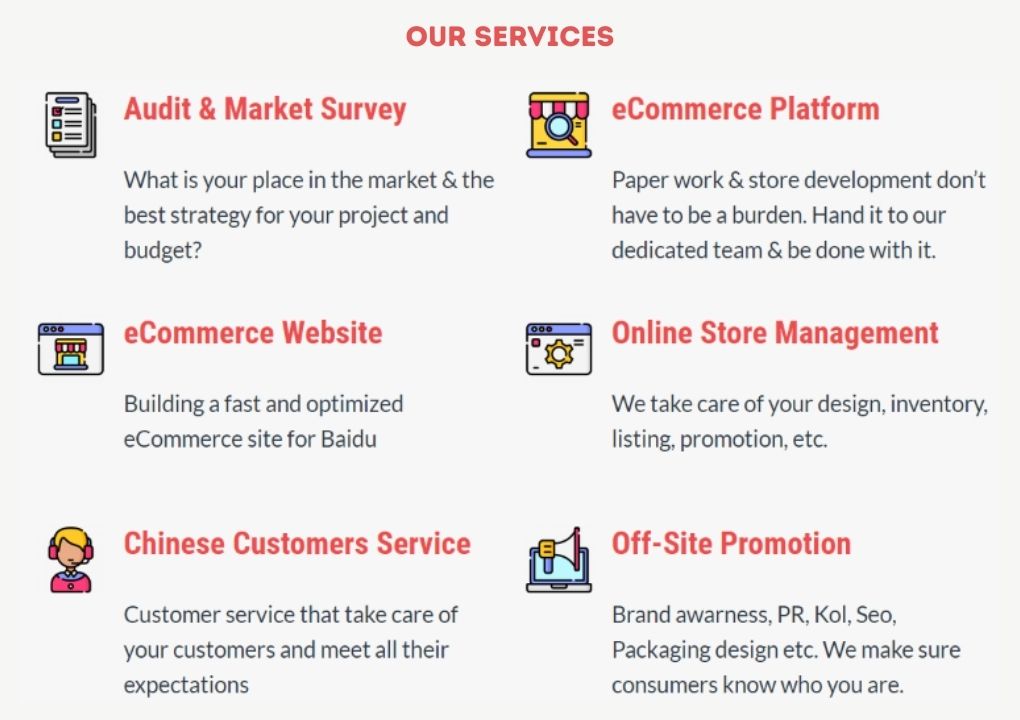Pro Info For Selecting Sellvia Shopify Dropshipping Services
Wiki Article
How To Evaluate The Supplier And Product Sourcing Integration Of An Amazon Seller And Shopify Service For Dropshipping Into Us Markets
When looking at Product Sourcing and Supplier Integration for dropshipping to the U.S. market, you'll have to evaluate each platform's capabilities in terms of supplier reliability speed, speed, ease integration and overall suitability for U.S.-based customers. Below is a list of the things to look for when evaluating Amazon Seller, Shopify, and WordPress for dropshipping requirements:
1. Amazon Seller
Fulfilled by Amazon as opposed to. Merchant Fulfilled. Amazon's FBA service will allow you to meet your customers' expectations by offering warehousing facilities and speedier delivery. FBA, however, requires you to buy inventory ahead of time, which is not identical to a dropshipping business model.
Amazon's Dropshipping Policy: Amazon requires that you declare yourself to be the seller in your record. Third-party service providers must be dependable in their quality and shipping services to avoid account cancellation due to order problems or feedback that is negative. Be sure to ensure that the suppliers you select comply with Amazon's strict packaging requirements and shipping requirements.
Limited Supplier Flexibility: On Amazon it is not possible to find integrations for external dropshipping suppliers similar to those offered through Shopify or WordPress. Dropshipping on Amazon means you will need to find suppliers who can be Amazon compatible and who meet the strict requirements for delivery. Also, you can select FBA Private Label for quicker delivery times.
Assessment Steps for Amazon Seller:
Evaluate Supplier Reliability. Assess whether the supplier is able to meet Amazon's expectations for shipping.
Policy Compliance: Ensure that the suppliers are in compliance with Amazon's packaging and labeling standards and that they can handle returns and refunds in accordance with Amazon's guidelines.
Communication with your supplier Clear and reliable communication is essential, as you must be prepared to handle any problems that may occur. Choose suppliers that have constant quality and stock levels to ensure that there are no disruptions.
2. Shopify
Supplier Integration Options: Shopify offers numerous supplier integration apps like Oberlo, Spocket, DSers, and Modalyst which make it simpler to locate products and to sync with dropshipping providers. Many of these apps have options to work with U.S.-based suppliers to speed up delivery times.
U.S.-based Supplier Access: Products such as Spocket or Printful specialize in sourcing products from U.S. suppliers or companies who have U.S. warehouses. This drastically reduces the time to ship for U.S.-based customers.
Automated Inventory Syncing Shopify integrates inventory data as well as product descriptions and pricing from suppliers to reduce the risk of errors in pricing or selling items that are out of stock. Automated order fulfillment features make it easier to handle manual work and ensure that your orders are always up to date.
Product Variety & Niche Options : Look at the options available to you and determine whether they are in line with your industry. This will impact brand consistency and customer satisfaction.
How to assess the Shopify
U.S. Based Supplier Availability You should determine which suppliers offer quick shipping to the U.S. Spocket, Printful and others U.S. suppliers are excellent alternatives.
Reviews and Product Quality Review and read reviews, as well as samples of products, if you can. Reliability of the supplier varies and it is therefore important to get feedback from buyers about the quality of products.
Supplier responsiveness and customer support Review the response time of suppliers. This is especially important when there is a problem. Suppliers who provide reliable customer service can improve customer satisfaction and resolve problems faster.
3. WordPress (WooCommerce)
Flexible Sourcing Using plugins: WooCommerce for WordPress offers significant flexibility when it comes to sourcing. The plugins, such as AliDropship and Spocket allow you to sync items from suppliers directly into your store.
U.S. Based Supplier Options: WooCommerce, similar to Shopify integrates U.S.based suppliers, including Spocket, Printful and other companies, allowing for quick delivery of items within the U.S.
Product Customization and Private Label Options: WooCommerce may also integrate with private label and custom print providers like Printful, which allows for product branding and customization--helpful for establishing a unique brand identity.
Manual Fulfillment Options: Although WooCommerce can be automated to fulfill orders with a variety of plugins, you'll have more control over the process, making it simpler to modify and troubleshoot if necessary. This isn't a bad thing, as it requires a bit longer to set up and manage than Shopify's plug and play integration.
WooCommerce evaluation steps:
Reviews and Compatibility - Review plugins offered by suppliers to make sure they're compatible and well-rated. Make sure that they are automatically synced with products, prices and inventory.
Quality Control of Suppliers Research the credibility and reputation of suppliers from the US. Look for suppliers with good customer service and consistency in product quality and availability.
Flexible pricing and product customization: WooCommerce allows for flexibility in pricing regulations and product customization, which is beneficial if you need to adjust the markups of your products frequently in line with the costs of suppliers or market trends. Follow the recommended Sellvia reviews for website recommendations including ecommerce storefront, trending ecommerce, online selling, opening e commerce business, best drop ship items, website business for sale, online business online business, ecommerce store, best online storefront, best online commerce platform and more.

How To Best Assess Customer Feedback And Customer Support
In order to ensure that buyers and sellers have a positive dropshipping experience, it's crucial to look over the feedback of customers. Each platform provides different levels of support and feedback mechanisms, which could impact customer satisfaction as well as business success. How to compare the three platforms.
1. Amazon Seller
Customer Feedback:
Product Reviews and Ratings: Amazon allows customers to review and rate items on a 1 to 5-star scale. This feedback is crucial for the reputation of a seller and could significantly impact sales. Ratings that are high in quality increase the credibility and visibility of the seller.
Feedback from buyers: Buyers can leave feedback for certain sellers. This could affect the seller's overall rating and performance metrics. A pattern of consistently negative feedback could cause a decrease in visibility, and account suspension.
Q&A section - Customers may submit questions to sellers and other customers. This section can be used to provide clarification on product specifications and help build trust.
Customer Support Features
Amazon Customer Service: Amazon has an excellent framework to provide customer support. Sellers are not directly responsible in providing customer support for FBA orders, since Amazon handles customer inquiries, returns as well as refunds. Sellers have to manage customer support for orders that are fulfilled by merchants.
Return Policy Amazon's policy regarding returns is customer-friendly and easy to follow, which improves confidence among consumers but creates more work for sellers when managing returns.
Seller Support Amazon offers dedicated support to its sellers. This includes assistance via Seller Central and tools to solve issues related to account health, performance metrics, and seller dispute.
Amazon Sellers: Assessment Methods
Review the metrics used by sellers. This will allow you to identify where to improve. Aim for high ratings to establish credibility.
Review Customer Reviews. Monitor product reviews regularly to keep up with customer feedback and maintain product quality.
Amazon Resources: Get know the Amazon Seller Central support features. This includes performance notifications, resolution options and more.
2. Shopify
Customer Feedback Mechanisms for Customer Feedback
Shopify Reviews Sellers can choose to integrate apps for customer reviews (e.g. Yotpo and Judge.me) that allow customers to post reviews directly on pages for products. This feedback will help to boost sales and increase trust.
Social Evidence. Many Shopify shops rely on social proof through testimonials and case studies or content created by users on social media. This increases credibility and help attract new customers.
Shopify merchants are implementing post-purchase surveys for the purpose of gathering insights about customer satisfaction and experience.
Customer Support Features
24/7 Support available 24 hours a day: Shopify offers support 24/7 via live chat, email, and phone. It allows merchants to receive assistance at any time they require they need it. This is vital when operating a dropshipping service.
Shopify Help Center is a complete resource with tutorials, articles and forums. It offers advice on a range of subjects, from store setup to online marketing strategies.
Shopify offers a variety of applications that provide customer service (e.g. Zendesk or Gorgias). These apps help to manage tickets, simplify customer enquiries and boost communication.
Evaluation Steps for Shopify:
Review Feedback Integration. Find out which review applications to integrate and the best way to motivate customers after purchase to leave feedback.
Test Support channels: Contact Shopify Support to test the speed of response and the quality of service.
Leverage Help Center Resources: Familiarize yourself with the Shopify Help Center to efficiently solve common problems.
3. WordPress (WooCommerce).
Customer Feedback Methods for Customer Feedback:
WooCommerce offers built-in review features for products. This allows customers to write reviews and leave feedback. Sellers are able to moderate reviews in order to determine the quality and relevance.
Feedback Plugins: Many WooCommerce shops use plugins to enhance review systems (e.g. the YITH WooCommerce Advanced Reviews), or feedback forms that permit detailed customer input.
Social Media Integration WooCommerce stores typically ask customers to leave reviews on their social media sites that can be posted on product pages to enhance credibility.
Customer Support Features
WooCommerce is heavily dependent on forums from the community and documents to provide support. WooCommerce Help Docs offers extensive assistance, but support could be less responsive than Shopify.
Hosting Support: Many WooCommerce sellers use managed hosting solutions that offer customer support. The support provided by hosting companies may vary in quality.
Support Systems Customizable: WooCommerce supports integration with products for customer support, such as Zendesk.
Evaluation Steps for WooCommerce:
Check Review Functionality: Ensure that the features for reviewing products are in place and evaluate any additional review plugins to boost feedback mechanisms.
Test Hosting Support. Contact the customer support department to check their responsiveness and the quality of service.
Create a Support Systems: To handle customer inquiries more efficiently, you should consider adding a support system to your business, such as a helpdesk. Follow the top Sellvia review for more examples including start online business, create an online store, drop shipping how to, start and online business, online companies for sale, make a online shop, opening e commerce business, sellvia amazon, ecommerce storefront, dropshipping store and more.
